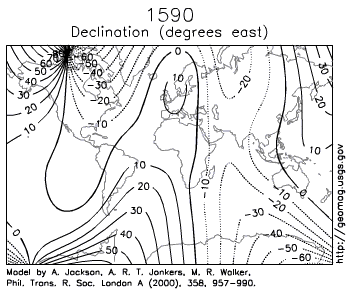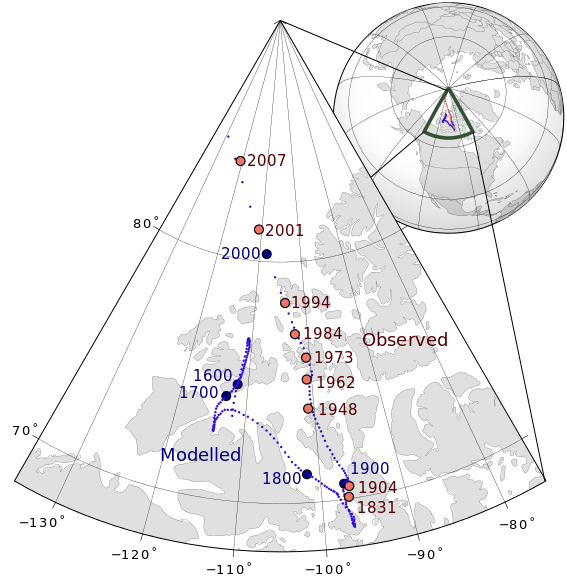For a typical compass with a magnetic needle
dip is the vertical angle of the needle from a locally horizontal plane. As you approach a magnetic pole the dip increases, the end of the needle is pulled downwards.
declination is the horizontal angle between where the needle points (local magnetic north) and true north (geographic north).
Both these vary considerably from place to place and from year to year.

The magnetic north pole wanders around considerably.
At some periods in the past the magnetic north pole has been located near the south pole.
There are also local magnetic anomalies that can affect a compass needle.
So, in conclusion, how a compass needle moves as you travel from equator to pole depends on where you start, when you start, what route you take, when you start, how long you take and on which of many north poles you aim to reach.

